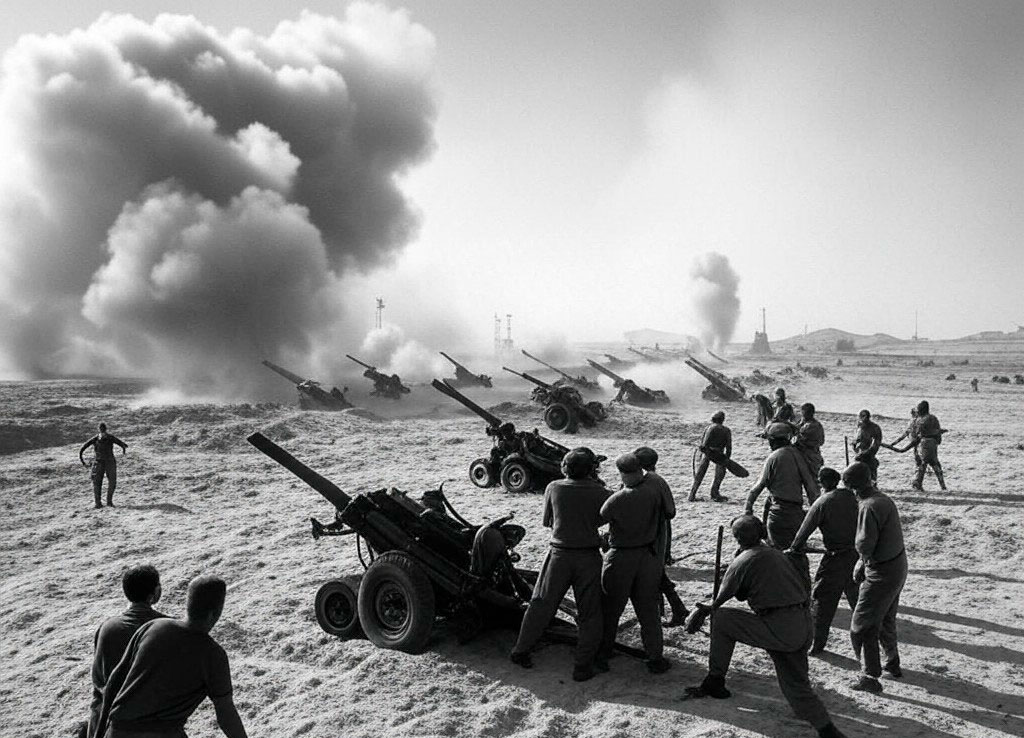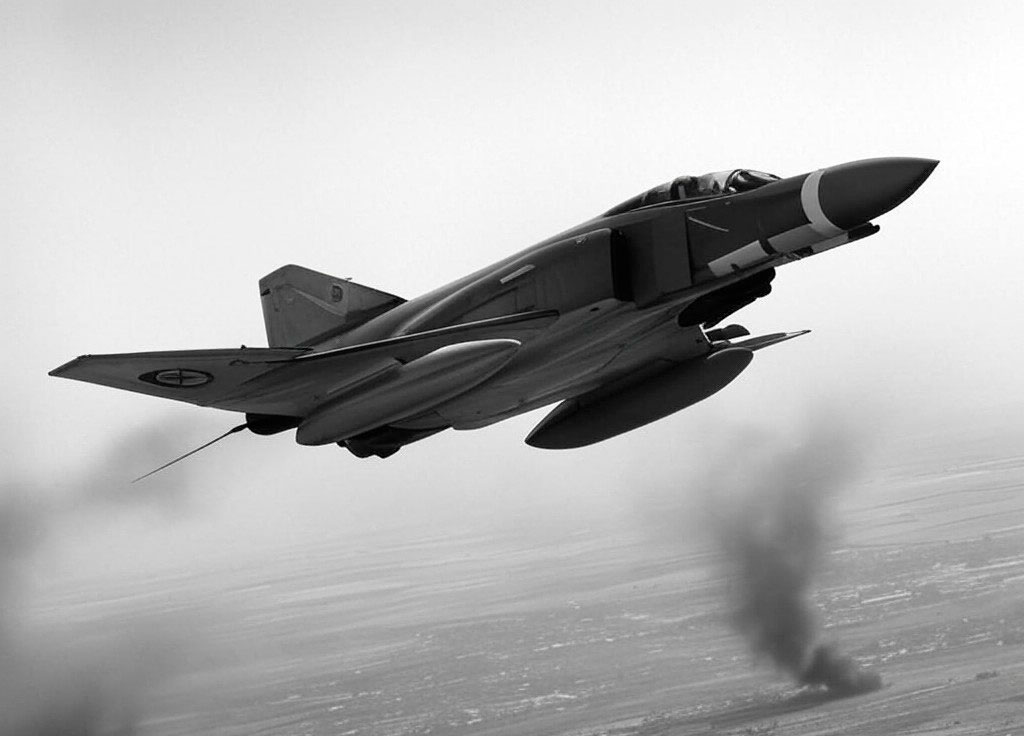An in-depth examination of the War of Attrition (1967–1970) between Israel and Egypt, detailing its causes, key players, significant battles, and lasting impacts.
The War of Attrition, spanning from 1967 to 1970, was a prolonged conflict primarily between Israel and Egypt, following the Six-Day War. Egypt aimed to reclaim the Sinai Peninsula, lost to Israel in 1967, by engaging in sustained military pressure along the Suez Canal. The hostilities included artillery duels, aerial combat, and commando operations. Both nations suffered significant casualties and equipment losses. The conflict drew in superpowers, with the Soviet Union supporting Egypt and the United States backing Israel. Despite intense fighting, the war concluded without a clear victor, leading to a ceasefire in August 1970. The protracted engagement underscored the deep-seated tensions in the Middle East and set the stage for future confrontations.
What Were the Reasons for the War of Attrition (1967–1970)
The War of Attrition emerged from the aftermath of the Six-Day War in June 1967, where Israel captured the Sinai Peninsula from Egypt. The swift and decisive Israeli victory left Egypt seeking to regain its lost territory and restore national pride. Egyptian President Gamal Abdel Nasser was determined to reclaim the Sinai and reassert Egypt’s position in the Arab world.
Following the 1967 defeat, Egypt faced significant military and territorial losses. The Sinai Peninsula, a strategic and resource-rich area, was under Israeli control, providing Israel with a buffer zone and control over the eastern bank of the Suez Canal. The canal’s closure disrupted international shipping and had economic implications for Egypt.
In September 1967, the Arab League summit in Khartoum adopted the “three no’s” policy: no peace with Israel, no recognition of Israel, and no negotiations with Israel. This stance reflected the collective Arab refusal to accept Israel’s territorial gains and underscored the desire to reverse the outcomes of the Six-Day War.
Egypt’s strategy involved initiating a prolonged conflict to wear down Israeli forces and morale. By engaging in continuous low-intensity warfare along the Suez Canal, Egypt aimed to make the Israeli occupation of Sinai untenable. This approach was designed to pressure Israel into withdrawing from the occupied territories without engaging in full-scale conventional warfare, for which Egypt was not yet prepared.
The Soviet Union’s support played a crucial role in Egypt’s decision to embark on this strategy. The Soviets provided Egypt with advanced weaponry, military advisors, and financial assistance, enabling the rebuilding and strengthening of the Egyptian military after its 1967 losses. This external support emboldened Nasser’s government to pursue a war of attrition against Israel.

Who Was Involved in the War of Attrition (1967–1970)
The War of Attrition primarily involved Egypt and Israel as the main belligerents. However, the conflict also saw the participation and influence of several other nations and groups, either directly or indirectly.
Egypt, under the leadership of President Gamal Abdel Nasser, initiated the conflict with the objective of reclaiming the Sinai Peninsula. The Egyptian military, with substantial support from the Soviet Union, engaged in continuous hostilities along the Suez Canal. The Soviets provided Egypt with advanced weaponry, including surface-to-air missiles (SAMs), aircraft, and radar systems, as well as military advisors to assist in planning and operations.
Israel, led by Prime Minister Levi Eshkol until 1969 and subsequently by Golda Meir, defended its positions along the eastern bank of the Suez Canal. The Israeli Defense Forces (IDF) focused on maintaining control over the occupied territories and countering Egyptian offensives. Israel received significant support from the United States, which supplied advanced military equipment, including aircraft and munitions, bolstering Israel’s defensive and offensive capabilities.
The Soviet Union played a pivotal role by providing extensive military aid to Egypt. Beyond supplying equipment, the Soviets deployed personnel, including pilots and air defense operators, to Egypt. This direct involvement marked a significant escalation, as Soviet forces occasionally engaged Israeli aircraft, leading to direct confrontations between Israeli and Soviet personnel.
The United States supported Israel by supplying advanced military equipment and providing diplomatic backing. The U.S. aimed to maintain the balance of power in the Middle East and counter Soviet influence in the region.
Other Arab nations, including Jordan, Syria, and Iraq, provided varying degrees of support to Egypt. While their direct involvement in the fighting along the Suez Canal was limited, these countries contributed forces and resources to the broader Arab-Israeli conflict during this period.
The Palestine Liberation Organization (PLO) also played a role, conducting guerrilla operations against Israeli targets. While not a central player in the War of Attrition, the PLO’s activities added another layer of complexity to the regional dynamics.
The Leaders of the War of Attrition (1967–1970)
The War of Attrition was shaped by key political and military leaders from both Egypt and Israel, as well as the involvement of the Soviet Union and United States, which influenced the course of the conflict.
Egypt
President Gamal Abdel Nasser was the central figure on the Egyptian side. Following the Six-Day War defeat in 1967, Nasser aimed to restore Egyptian military strength and challenge Israeli occupation of the Sinai Peninsula. He devised a strategy of prolonged military pressure along the Suez Canal, with the expectation that Israel would be worn down over time. Under his leadership, Egyptian artillery and air raids intensified, and new surface-to-air missile (SAM) systems were deployed with Soviet assistance. Nasser’s policies were closely aligned with Soviet military doctrine, and he relied heavily on Soviet advisors and military aid throughout the war.
After Nasser’s death in September 1970, Anwar Sadat succeeded him as Egypt’s president. Though the war officially ended shortly after he took office, Sadat later used lessons from the War of Attrition to shape Egypt’s strategy in the 1973 Yom Kippur War.
Israel
On the Israeli side, Prime Minister Levi Eshkol led the country during the early stages of the conflict. After his death in 1969, he was succeeded by Golda Meir, who continued a firm stance against Egyptian aggression. Meir, along with Defense Minister Moshe Dayan, maintained a policy of strong retaliation, conducting aerial bombing campaigns and deep raids into Egyptian territory.
Chief of Staff Haim Bar-Lev played a major role in designing Israel’s defensive strategy. The Bar-Lev Line, a system of fortifications along the Suez Canal, was constructed under his direction to protect Israeli positions.
Soviet and American Influence
The Soviet Union, under Leonid Brezhnev, provided direct military support to Egypt, including the deployment of Soviet pilots and SAM operators. Meanwhile, the United States, led by Presidents Lyndon B. Johnson and later Richard Nixon, supplied Israel with advanced aircraft and weaponry, ensuring Israel maintained military superiority.
Both superpowers played critical roles, turning the War of Attrition into a proxy conflict within the broader framework of the Cold War.

Was There a Decisive Moment?
The War of Attrition did not have a single decisive moment, but a series of key events shaped its outcome. Unlike conventional wars with clear battles and territorial gains, this conflict was fought as a prolonged struggle along the Suez Canal, involving artillery duels, aerial combat, and commando operations.
One significant escalation occurred in March 1969, when Nasser officially declared the War of Attrition and launched intense artillery barrages along the Suez Canal. Egyptian forces targeted Israeli fortifications and supply lines, aiming to weaken Israel’s hold on the occupied Sinai Peninsula.
In response, Israel intensified its aerial campaign, targeting Egyptian military infrastructure and cities. Israeli F-4 Phantom and A-4 Skyhawk jets, supplied by the United States, bombed strategic targets deep within Egypt, including air bases and industrial facilities. These strikes significantly degraded Egypt’s military capabilities but failed to force a decisive breakthrough.
By mid-1970, Soviet involvement reached a critical point. The Soviet Union deployed combat pilots and air defense units in Egypt, directly engaging Israeli aircraft. On July 30, 1970, Israeli F-4 Phantoms shot down four Soviet MiG-21s, marking the first direct air-to-air combat between Israeli and Soviet pilots. This event highlighted the international stakes of the conflict and pushed both sides closer to the brink of escalation.
The final shift came in August 1970, when the United States brokered a ceasefire between Egypt and Israel. By this point, neither side had achieved a clear victory. Israel retained control over the Sinai Peninsula, but Egypt had demonstrated its resilience and gained valuable military experience.
Major Battles of the War of Attrition
The War of Attrition featured several notable battles and operations, primarily along the Suez Canal, but also extending into Egyptian and Israeli-held territories. The conflict involved artillery duels, aerial engagements, and commando raids, each influencing the course of the war.
The Battle of El Qantarah (March 1969)
On March 8, 1969, Egyptian forces launched a large-scale artillery bombardment on Israeli positions at El Qantarah, located along the northern Suez Canal. This attack marked the formal beginning of the War of Attrition. Israeli forces retaliated with heavy airstrikes, destroying Egyptian artillery positions and radar installations.
Operation Boxer (July 1969)
To counter Egyptian offensives, Israel initiated Operation Boxer in July 1969, an intensive aerial campaign targeting Egyptian SAM sites, air bases, and logistics hubs. Israeli F-4 Phantoms and A-4 Skyhawks struck deep inside Egypt, forcing the Egyptian Air Force onto the defensive. This operation demonstrated Israel’s air superiority and inflicted significant damage on Egyptian military infrastructure.
Operation Raviv (September 1969)
One of Israel’s most daring raids, Operation Raviv, took place in September 1969. Israeli commandos and armored forces crossed the Gulf of Suez, launching an amphibious raid on Egyptian coastal installations. Using captured Soviet-made Egyptian tanks, Israeli forces destroyed multiple radar stations, artillery sites, and logistics bases before withdrawing safely.
The Air Battle of July 30, 1970
The conflict escalated when Soviet pilots, operating MiG-21 jets, directly engaged Israeli fighter aircraft. In a major air battle on July 30, 1970, Israeli pilots shot down four Soviet MiG-21s, marking the first and only direct aerial engagement between Israel and the Soviet Union. This event heightened Cold War tensions and influenced the eventual push for a ceasefire.
The Ceasefire Violation (August 1970)
On August 7, 1970, a ceasefire agreement was signed. However, Egypt immediately moved SAM batteries closer to the Suez Canal, violating the agreement. These deployments later played a crucial role in Egypt’s air defense strategy during the 1973 Yom Kippur War.

Was There a Turning Point?
The War of Attrition was characterized by prolonged fighting, but there was no single turning point that shifted the balance definitively. Instead, a series of key events altered the course of the conflict and influenced its conclusion.
One of the most significant shifts occurred in mid-1970, when the Soviet Union escalated its involvement by directly deploying Soviet pilots and air defense units to Egypt. The increasing presence of Soviet MiG-21 fighter jets and SA-3 surface-to-air missile (SAM) systems complicated Israel’s air superiority, forcing the Israeli Air Force (IAF) to reassess its deep-strike strategy.
A major engagement took place on July 30, 1970, when Israeli F-4 Phantom jets intercepted a group of Soviet-piloted MiG-21s over the Nile Delta. In a decisive air battle, four Soviet MiGs were shot down, marking the first time Israeli pilots directly engaged Soviet forces. This event signaled that the war was escalating beyond a regional conflict, increasing tensions between the United States and the Soviet Union.
The risk of direct superpower confrontation prompted Washington and Moscow to intervene diplomatically. By August 1970, both nations pressured their respective allies to accept a ceasefire. The United States, concerned about rising Soviet influence in the region, encouraged Israeli Prime Minister Golda Meir to agree to a cessation of hostilities.
The official ceasefire took effect on August 7, 1970. However, Egypt immediately violated the agreement by moving SAM batteries closer to the Suez Canal, strengthening its air defense network. Israel, though aware of this violation, refrained from retaliating, as the political decision to end the conflict had already been made.
While no single battle or operation served as a turning point, the combined effect of Soviet intervention, increased Israeli counterstrikes, and superpower pressure led to the ceasefire agreement. The conflict ended without a clear winner, but Egypt’s strategic positioning of SAM sites laid the groundwork for its success in the 1973 Yom Kippur War.
Consequences of the War of Attrition
The War of Attrition had far-reaching military, political, and diplomatic consequences, shaping the future of the Arab-Israeli conflict and altering regional power dynamics.
Military Impact
Both Egypt and Israel suffered significant losses. Egypt lost over 10,000 soldiers, while Israel suffered approximately 1,000 casualties. The Egyptian Air Force was severely weakened by Israeli airstrikes, and its military infrastructure required years to rebuild. However, Egypt gained valuable combat experience and improved its defensive capabilities with Soviet aid.
Israel retained control over the Sinai Peninsula, but at a high cost. The Bar-Lev Line fortifications, constructed along the Suez Canal, proved ineffective against sustained artillery bombardments and commando raids. Israeli forces learned critical lessons about asymmetrical warfare and the limitations of air power against well-coordinated air defenses.
Political and Strategic Shifts
The war did not result in territorial changes, but it altered military strategies on both sides. The Egyptian military, having strengthened its surface-to-air missile (SAM) network, developed a new approach for future conflicts. This defensive infrastructure later played a crucial role in the 1973 Yom Kippur War, where Egyptian forces successfully crossed the Suez Canal and penetrated the Bar-Lev Line.
For Israel, the war reinforced the importance of air superiority and intelligence gathering. The lessons learned influenced later Israeli military operations, including its preemptive strikes in the 1973 war.
Superpower Involvement and Cold War Tensions
The war deepened the involvement of global superpowers in the Middle East. The Soviet Union increased its direct support for Egypt, deploying military advisors, air defense units, and pilots. The United States, in response, expanded its military aid to Israel, providing F-4 Phantom jets, advanced radar systems, and financial support. This proxy conflict heightened Cold War tensions, leading Washington and Moscow to reassess their regional strategies.
Diplomatic and Ceasefire Agreement
The war ultimately ended with a U.S.-brokered ceasefire in August 1970. Though hostilities ceased, tensions remained unresolved. Egypt continued to view the Sinai occupation as unacceptable, and Israel remained committed to holding its defensive positions. This unresolved conflict set the stage for the 1973 Yom Kippur War, where Egypt attempted to reverse its earlier losses.
Back to the Wars section